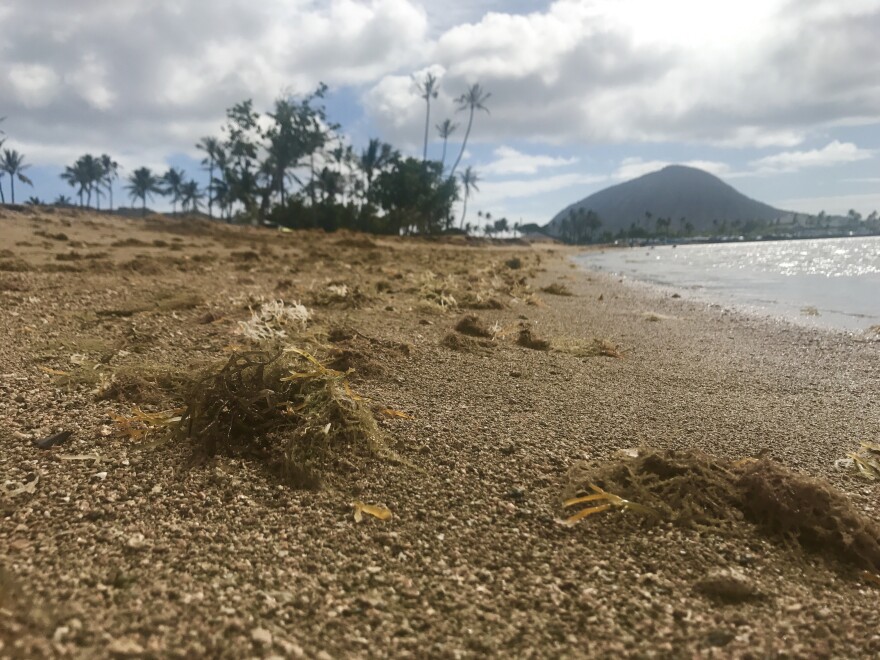Invasive seaweeds have taken a stronghold on Hawai?i reefs over the last half of the 20th century, contributing to a decline in the health and productivity of once-thriving marine ecosystems. HPR's Ku?uwehi Hiraishi visits one community that is fighting back.
Maunalua Bay runs eight miles from Black Point to Portlock. The bay was once home to one of the most productive coastlines in East O’ahu. Here’s Molly Mamaril.

“I’ve heard stories from kupuna of the area, who mentioned that you could walk out in one foot of water and get all the seafood you would need for a week,” says Mamaril.
Mamaril works with Pono Pacific a land conservation company who’s teamed up with local non-profit M?lama Maunalua to restore this once thriving marine habitat.
“Maunalua is our backyard, and to care for it can mean multiple things but today it means removing invasive algae,” says Mamaril.

Today, the group organized a Community Huki. “Huki” is the Hawaiian word for pull. More than 50 volunteers, including local schools, businesses and families, spent the morning in knee-high water 50 yards off of Paik? Beach pulling invasive seaweed.
M?lama Maunalua’s Certified Huki Leader Randy Pilar says invasive algae poses the greatest threat to coral reefs and nearshore marine ecosystems by smothering native seaweed.

“The native limu (seaweed) can’t really establish themselves,” says Pilar, “And the things that are dependent on the native limu, like the fishes that eat them, they in turn leave, because they have nothing to eat anymore.”
Pilar gives volunteers the rundown on spotting the most prevalent invasive limu – the leather mudweed.
“So the name leather mudweed is a telltale. It looks like leather and it collects a lot of mud. So it’s a really dirty looking limu,” says Pilar.

“See this is the mudweed right here. The one that looks like some dirty cole slaw,” says volunteer Matt Garalde.
17-year-old Garalde is volunteering with the Farrington High School Leo Club. Matt’s advisor Diane Tom-Ogata brings her high school students here whenever she gets a chance.
“They not only contribute to their community to make it a better place, but they also learn about their community,” says Tom-Ogata, “They learn about human impacts and how it can be devastating or how as humans we can help to make a change.”

“These invasive seaweeds they feed on top of our waste and such,” says Garalde, “And they get more plentiful because of us, so it’s only right for us to get rid of them.”
“The sediment that comes down from the mountains and through the neighborhoods, coupled with runoff and pollutants kind of created an environment where invasives thrive,” says Mamaril, “By removing it we give the native ecosystem a way to bounce back.”

Over the past decade, M?lama Maunalua has enlisted the help of nearly 15,000 volunteers and removed more than 3.5 million pounds of invasive algae. Here’s Pilar.
“When I go out into the bay by myself, I see a lot of the fishes coming back,” says Pilar, “I see ???io. I see papio, like ulua size already. I see schools of manini like 200, 300 strong.”
But most of all, he sees hope for the future of Maunalua Bay.
To sign-up for a future Community Huki or to get involved in habitat restoration efforts in Maunalua Bay, visit www.MalamaMaunalua.org




